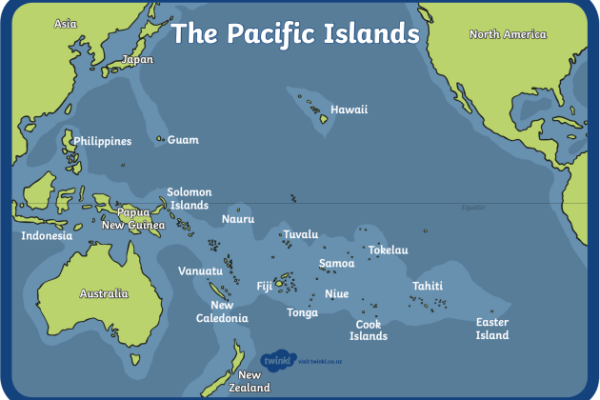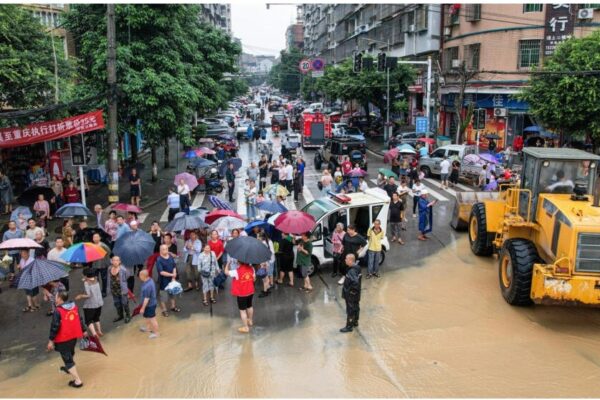An uneasy calm prevailed in Bangladesh’s capital Dhaka on the third day of a nationwide curfew Monday, as authorities said they had arrested hundreds of people for their alleged involvement in violence during protests that turned deadly last week. While there were no protests or street clashes, two people badly hurt in the earlier violence succumbed to their injuries on Monday. This took the death toll to at least 138 in a week of street clashes that began as protests against a discriminatory quota system for government jobs and became a wider agitation against Prime Minister Sheikh Hasina’s 15 years in power. Hasina and other government officials blamed opposition groups for last week’s deadly violence, according to footage from Channel 24 distributed by Reuters news agency. But university students, who began the protests after the quotas were reinstated by a court last month, have alleged that it was members of the student wing of Hasina’s Awami League, aided by the police, who incited the clashes. A man rides his motorbike on a mostly empty street past vehicles that were set on fire during clashes among university students, police and government supporters, after violence erupted during what were initially protests against government job quotas,Dhaka, July 22, 2024. (Mohammad Ponir Hossain/Reuters) U.S. State Department spokesman Matthew Miller on Monday said the U.S. condemns “reported shoot-on-sight orders” that are part of a crackdown on the protests. “The United States is concerned by reports of ongoing telecommunications disruptions in Bangladesh,” Miller told reporters, referring to a state-imposed internet and mobile connectivity shutdown that continued Monday, reported Reuters. Habibur Rahman, Dhaka Metropolitan Police’s commissioner, told reporters on Monday that police have arrested more than 600 people, mostly in Dhaka, for violent acts during the protests. A senior official from the main opposition Bangladesh Nationalist Party, Zahir Uddin Swapon, and a minor party’s leader, Md. Tarek Rahman, were arrested Monday. Tarek’s wife, Tamanna Ferdosi Sikha, told BenarNews that a joint force of police, border guard and soldiers entered their house at about 2:30 am and picked up Tarek and his brother. “They seized a computer and other digital devices from our house,” she said. Students give a 48-hour ultimatum After the curfew that was imposed Friday was indefinitely extended on Sunday, Bangladesh Army chief Waker-uz-Zaman told reporters that more time was needed to “normalize” the situation. “Many state properties were vandalized … there are many ways of staging protests,” he said Monday. “But carrying out attacks on state properties is not wise.” Several government buildings and properties were set on fire last week during the clashes, including the state broadcaster and a train station. The protesting students were not mollified by the Supreme Court on Sunday ending most of the quotas in civil service jobs. The court lowered the number of reserved jobs to 7% from 56%. A key plank of the quota system was the reservation of civil service jobs for relatives of those who fought in Bangladesh’s 1971 independence war. The students also demanded that the internet be restored and security forces be withdrawn from university campuses. “We are issuing an ultimatum … 48 hours to stop the digital crackdown and restore internet connectivity,” Hasnat Abdullah, coordinator of the Anti-Discrimination Student Movement, told the Associated Press. “Within 48 hours, all law enforcement members deployed at different campuses should be withdrawn, dormitories should reopen and steps should be taken so that students can return to the [residence] halls.” Asif Nazrul, a professor in Dhaka University’s law faculty, said protesting students might only be satisfied if authorities apologize for unlawful actions, arrest armed cadres of the ruling Awami League’s student and youth wings and arrest police and elite Rapid Action Battalion members who fired on unarmed civilians. “Over 150 people died and thousands of protesters were injured in the uprising. I think the protest will not end with the judgment of the Supreme Court. Bangladesh’s people are not so foolish,” he told BenarNews. The Rapid Action Battalion has previously been accused of enforced disappearances, extrajudicial killings and the use of torture and the U.S. has imposed financial sanctions on it for “serious human rights abuses.” Two auto rickshaws are seen on an otherwise empty road during a nationwide curfew in the Jatrabari area in Bangladesh’s capital, Dhaka, July 22, 2024. [Jibon Ahmed/BenarNews] Some students are also demanding Hasina apologize or retract her comments from a week ago, when she said anti-quota protesters were akin to collaborators with Pakistan in the 1971 war Bangladesh fought to separate from that nation. The protests spread after Hasina’s comments. Reuters video showed her telling business leaders at a meeting in her Dhaka office that opposition forces were responsible for vandalism, arson and murders during the protests. Hasina’s advisor, Salman F. Rahman, said the student movement had been hijacked by people who wanted to overthrow the government. “There was a big conspiracy, they tried to ensure the fall of the government,” Rahman said. Another Hasina administration member, Nasrul Hamid, state minister for power and energy, claimed that the clashes caused U.S. $85 million in damages to power equipment. “We are trying to identify the people involved in such sabotage and they must be prosecuted,” he said. Bangladesh army personnel stand guard near the parliament house during a curfew imposed after clashes during anti-quota protests turned deadly, Dhaka, July 22, 2024. (Munir uz Zaman/AFP) Meanwhile, average Bangladeshis are bearing the brunt of the curfew, according to their accounts and those of vegetable, fruit and meat sellers. Abdul Baten, who operates a garment factory in an area called Mirpur-11, told BenarNews that prices of staple foods have risen. “We mainly depend on potato, egg, broiler chicken skin and leg, and lentils. A dozen eggs now costs 160 taka, up from 135,” he said. The problem, said vegetable trader Nur Mohammad, is that no produce is coming into Dhaka. “There is an abundant supply of vegetables outside Dhaka. But due to the curfew it cannot be transported here,” he told BenarNews. “Unless the supply chain is restored, the prices will not come down,”…



